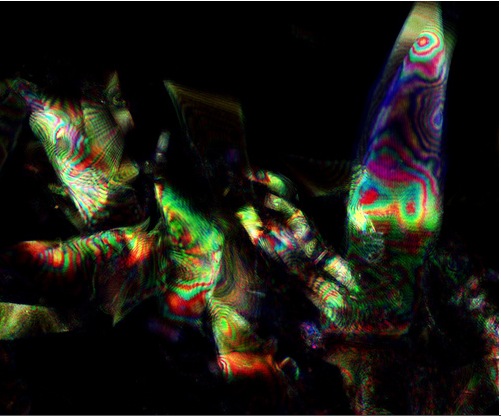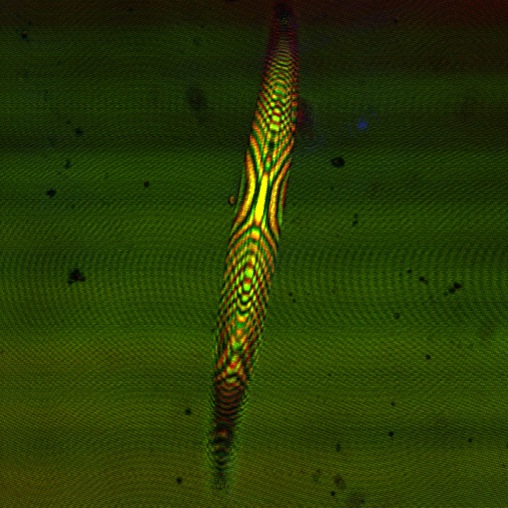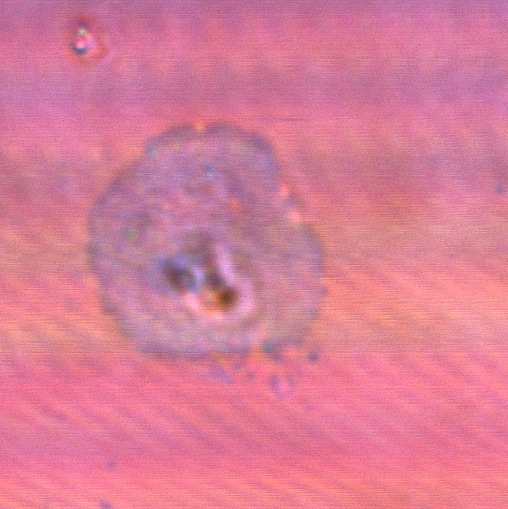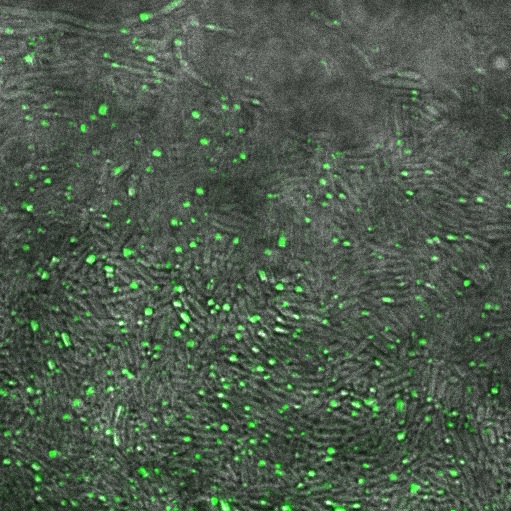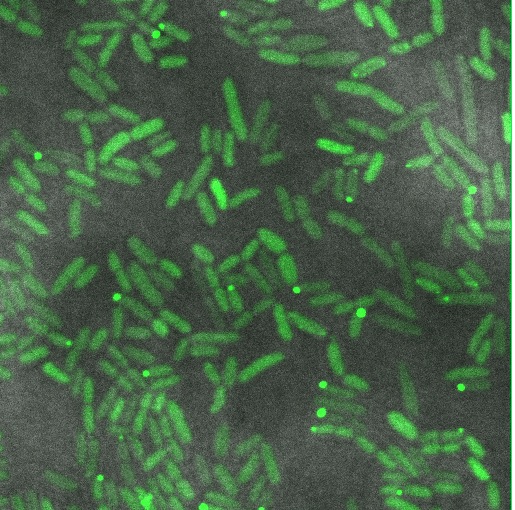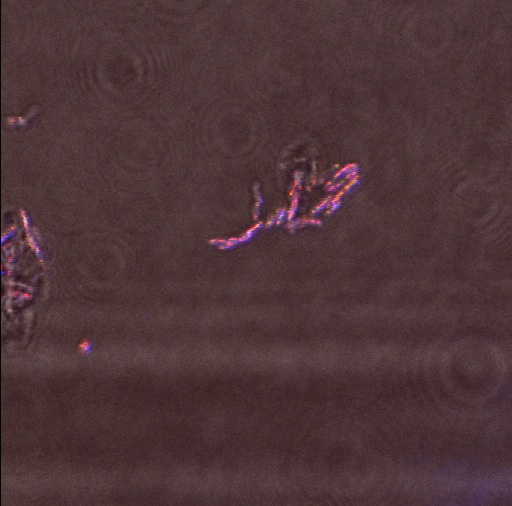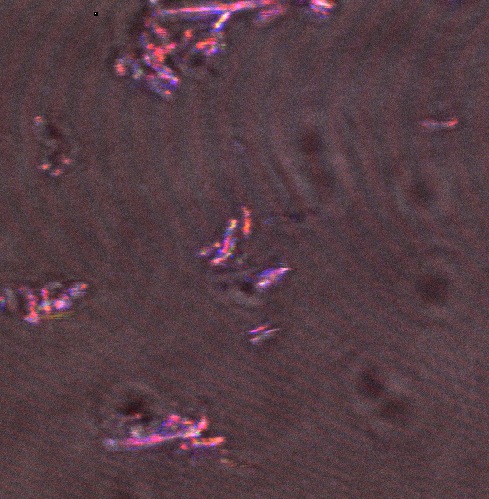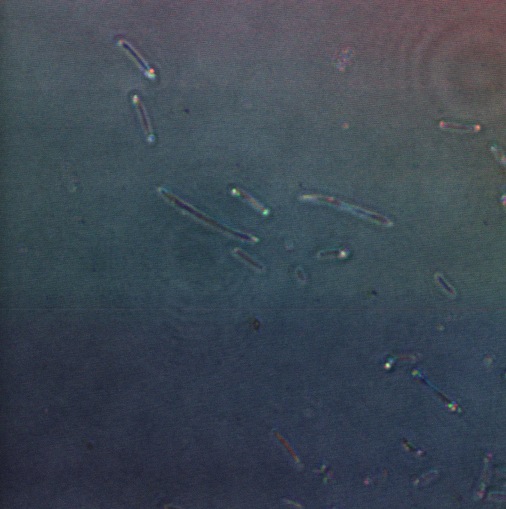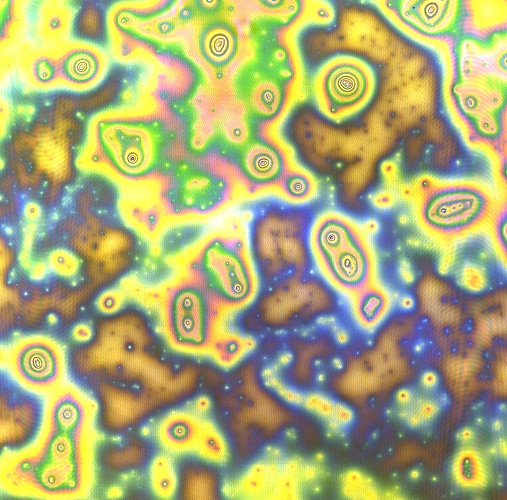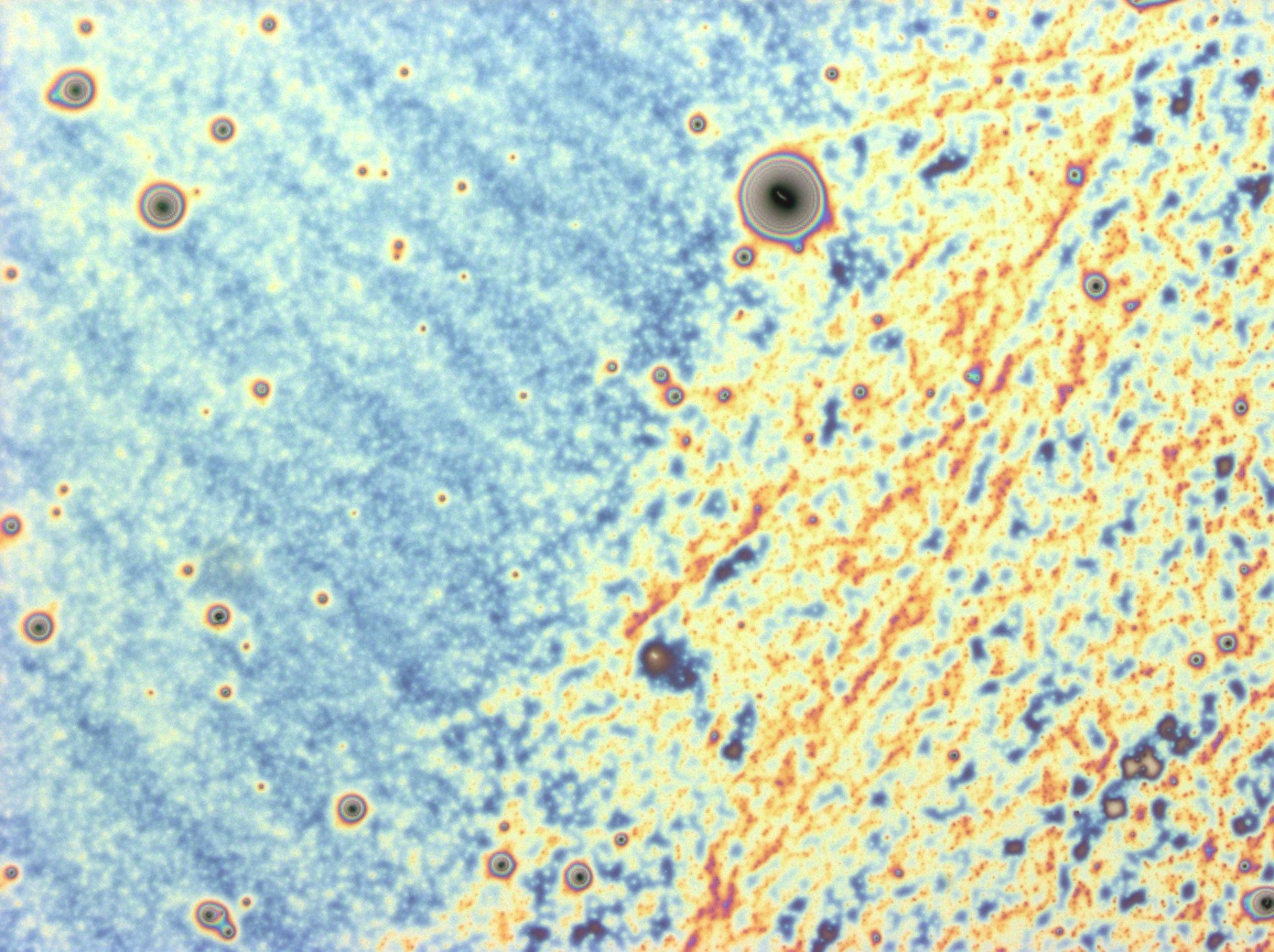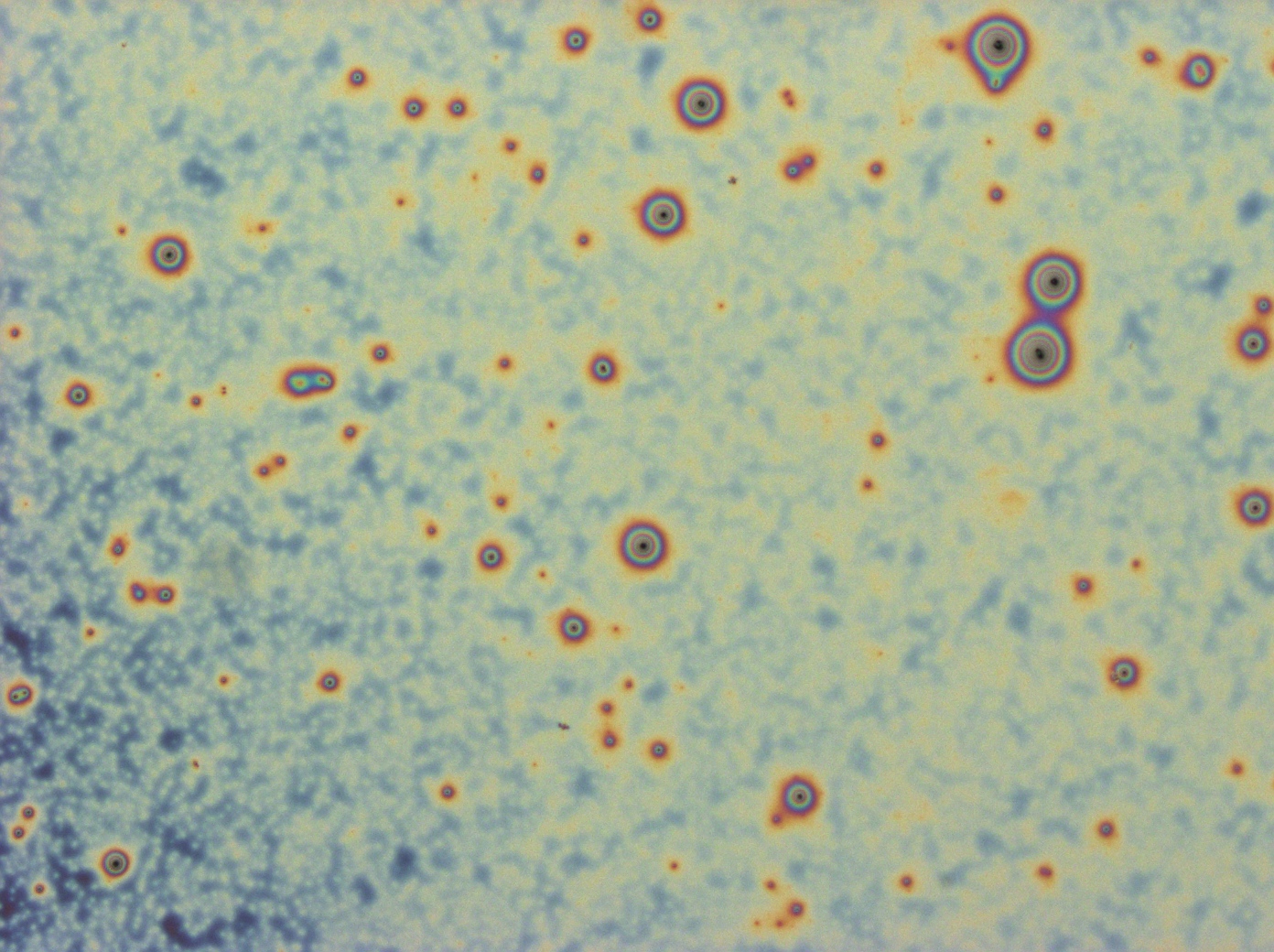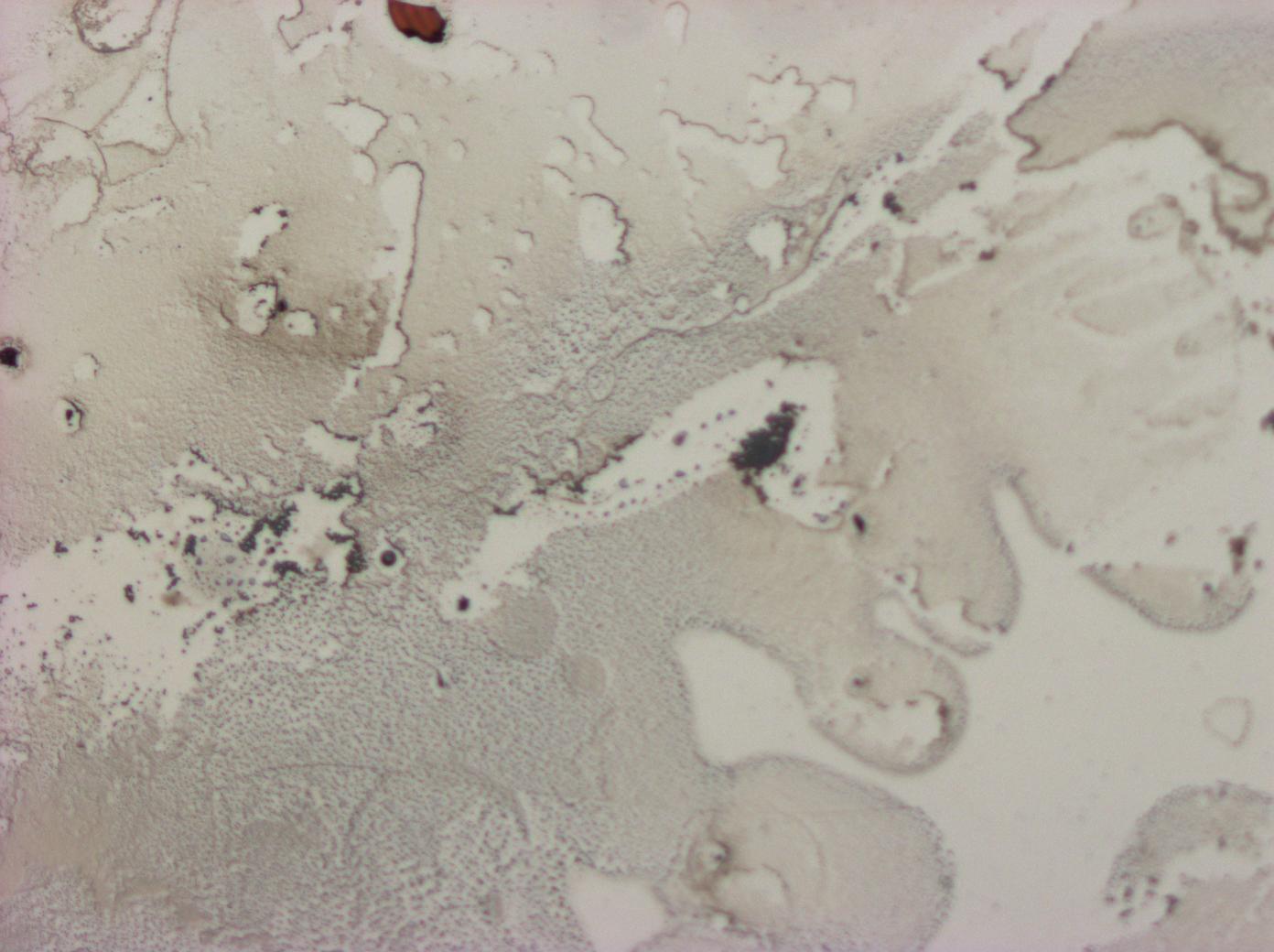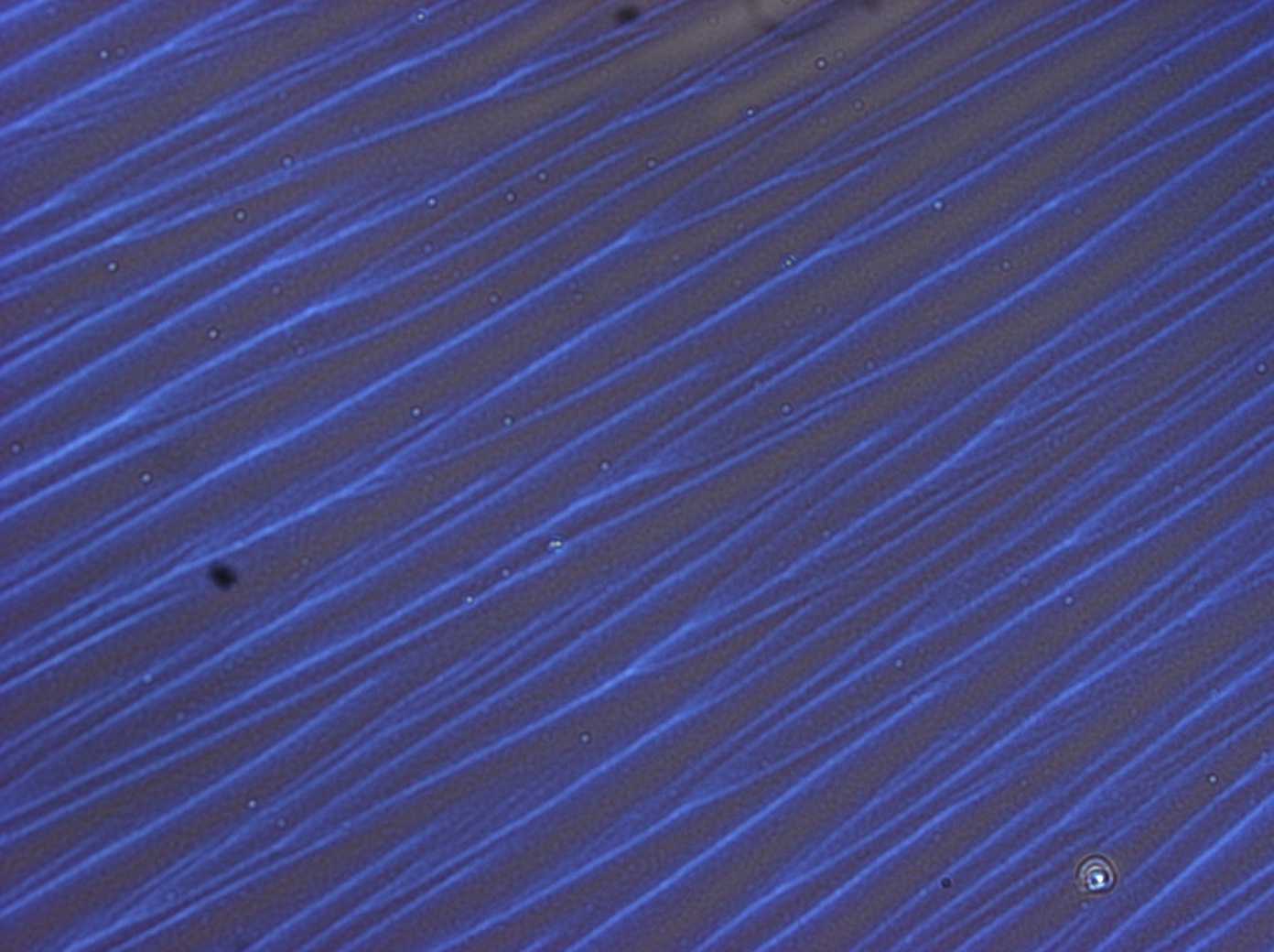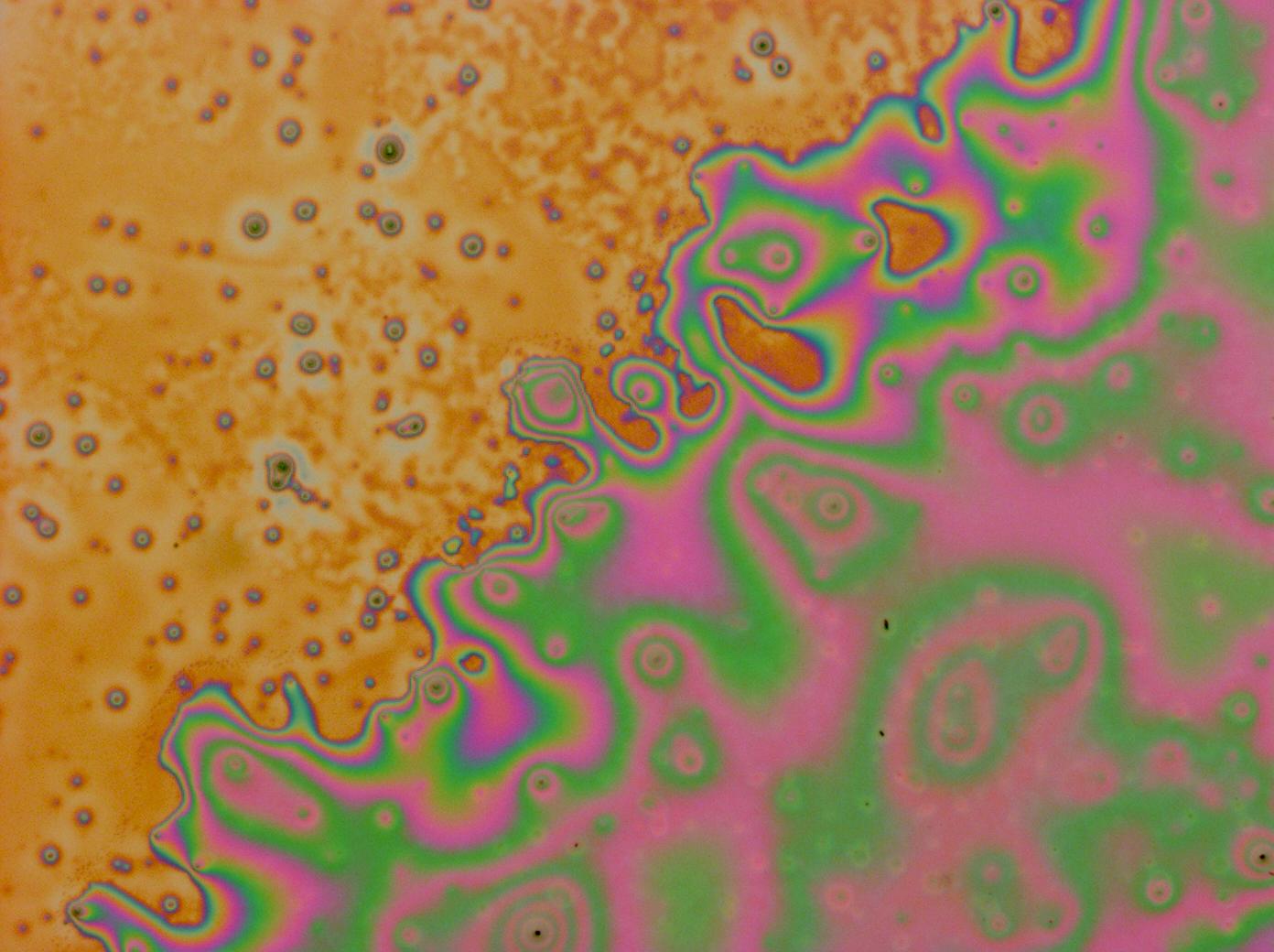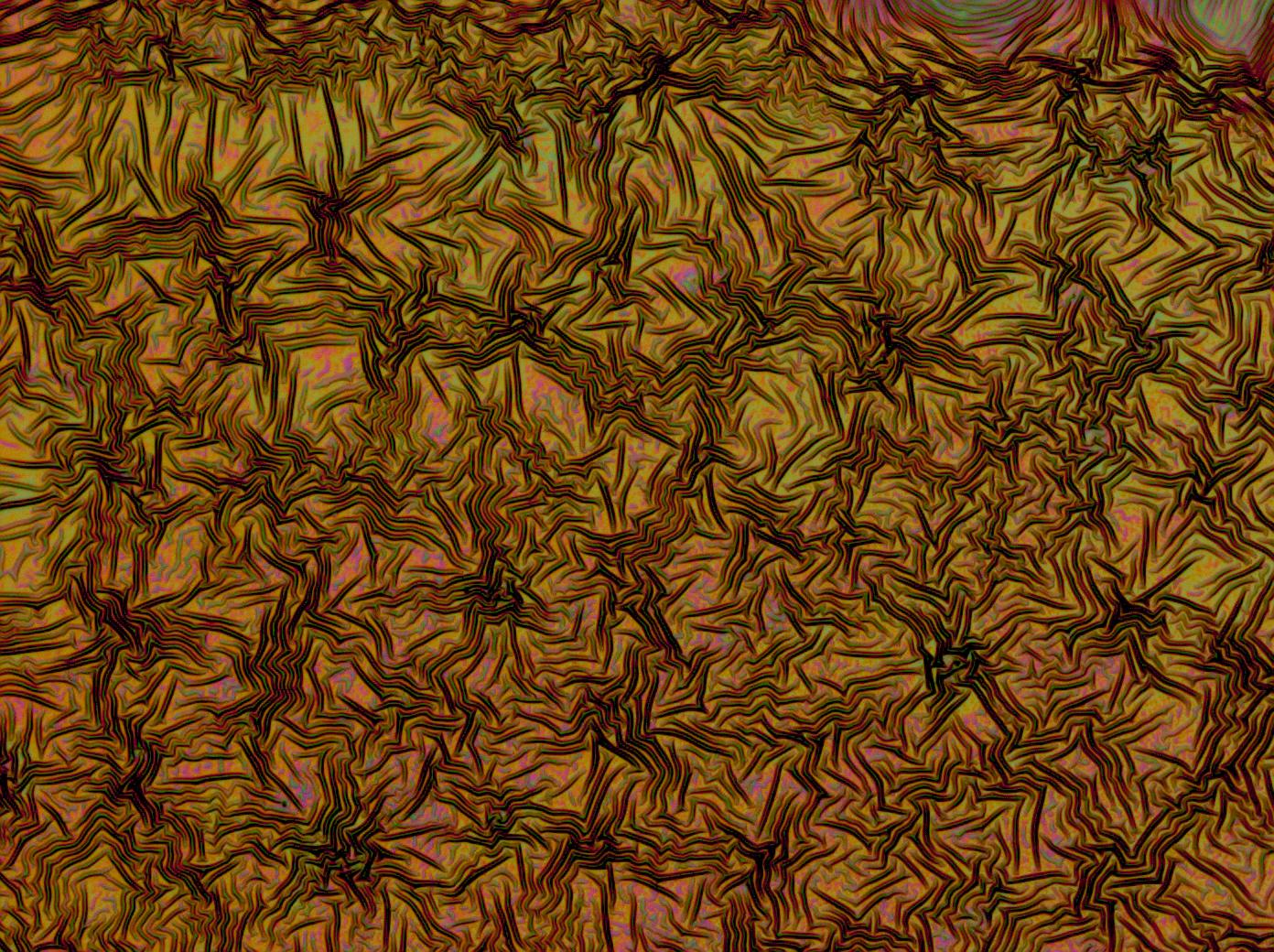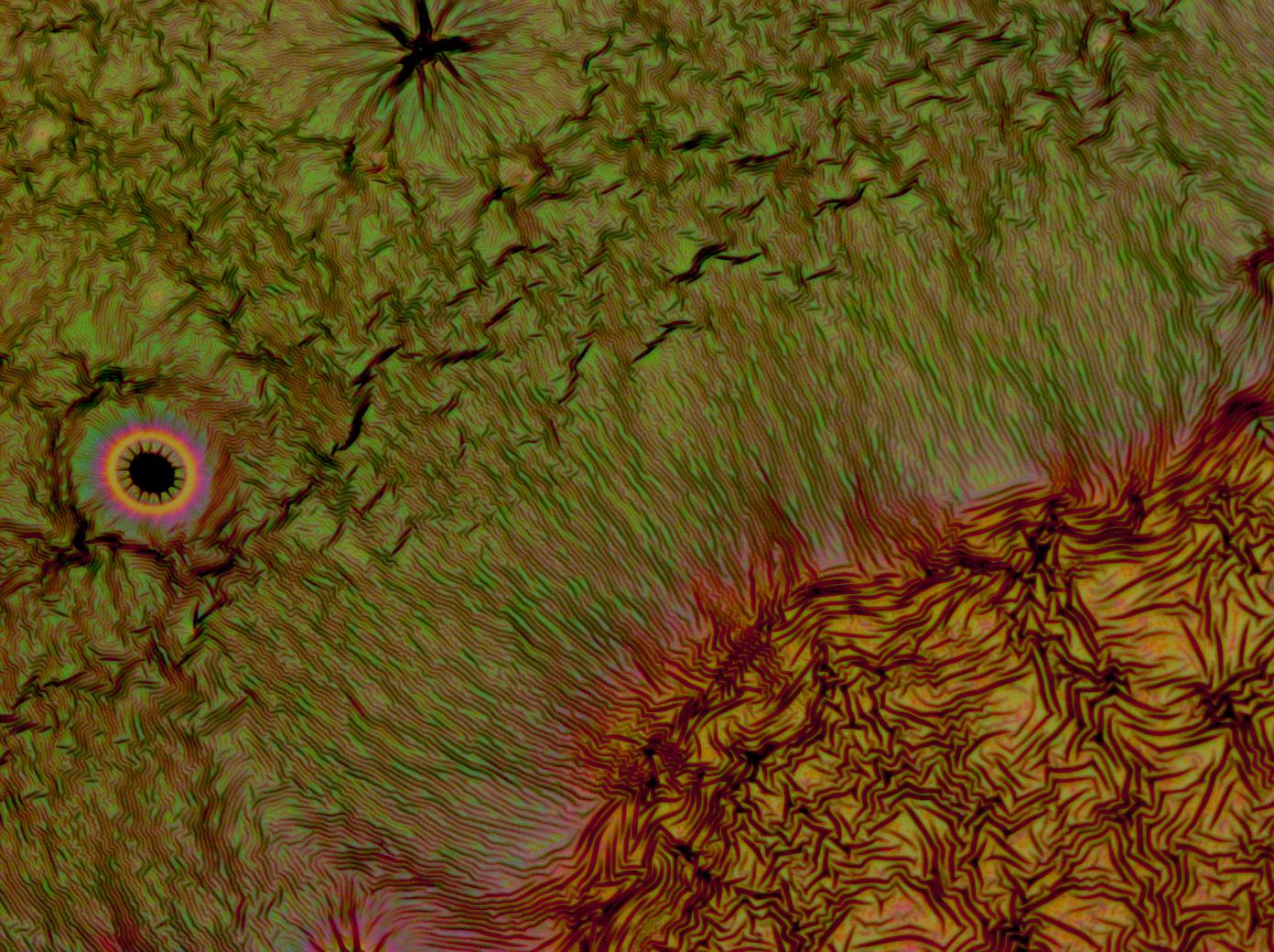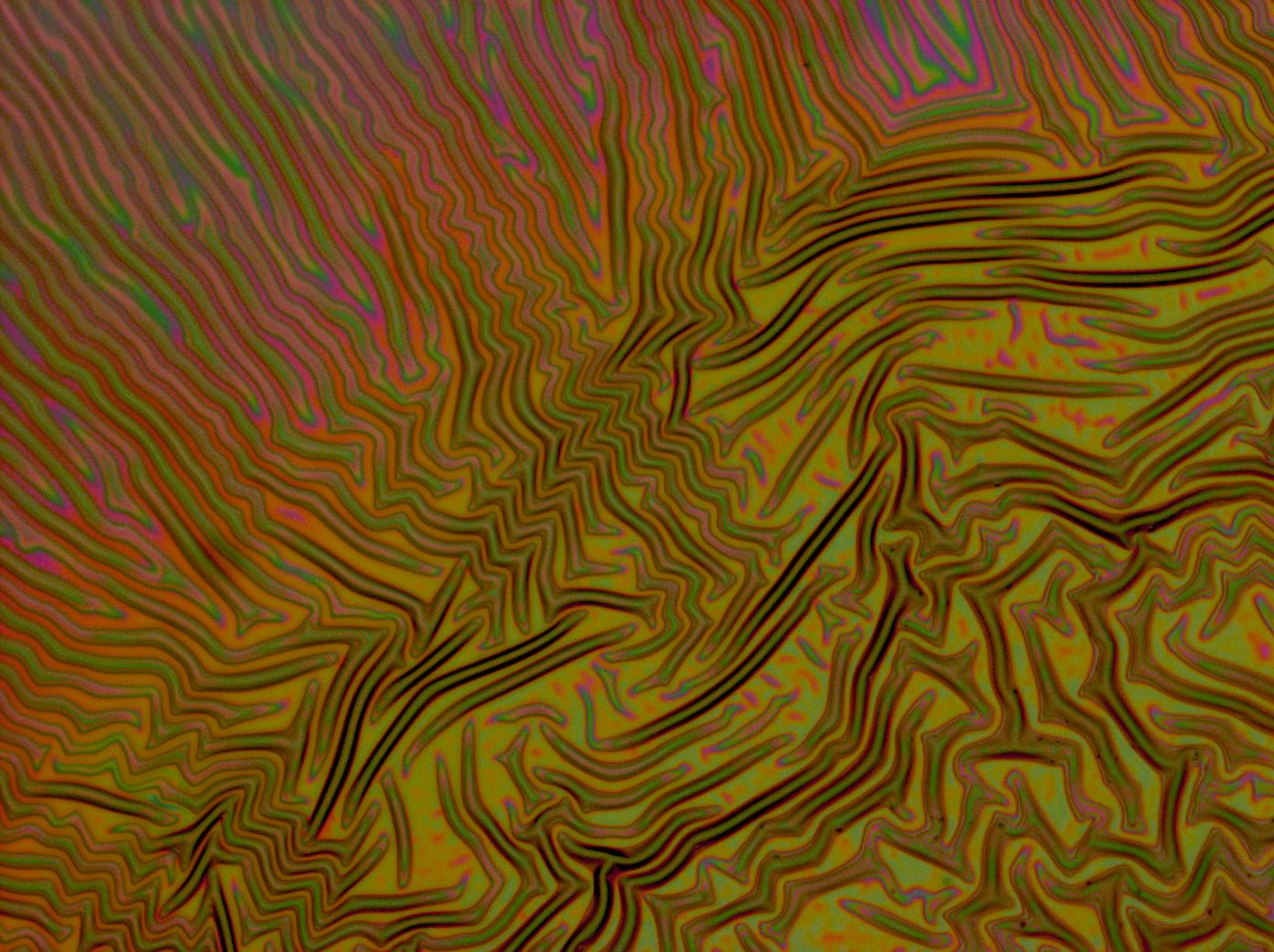Team:Cambridge/Project/Microscopy
From 2011.igem.org
(→Squid Tissues) |
(→Squid Tissues) |
||
| Line 17: | Line 17: | ||
[[File:Iridescent cells from around squid eye.jpg |thumb| 600px| center| Iridescent cells from around the squid eye, with thanks to Fernan Federici and Paul Grant]] | [[File:Iridescent cells from around squid eye.jpg |thumb| 600px| center| Iridescent cells from around the squid eye, with thanks to Fernan Federici and Paul Grant]] | ||
| - | + | We used the enzyme trypsin to isolate cells from the mantle of the squid as this frees them from the extracellular matrix. Again we used the confocal microscope in a configuration that detects reflected light. Below is a non-iridescent cell from the tentacle imaged under the same conditions. | |
| - | + | ||
| - | We used the enzyme trypsin to isolate cells from the mantle of the squid as this frees them from the extracellular matrix. Again we used the confocal microscope in a configuration that detects reflected light. | + | |
[[File:Trypsinogised Mantle Tissue 1.jpg |thumb|600px|center| Spindle shaped cell from the squid mantle, isolated using trypsin. Thanks to Paul Grant for helping us take this image.]] | [[File:Trypsinogised Mantle Tissue 1.jpg |thumb|600px|center| Spindle shaped cell from the squid mantle, isolated using trypsin. Thanks to Paul Grant for helping us take this image.]] | ||
| + | |||
| + | [[File:Cam Squidtentaclenegativecontrol.jpg |thumb| 600px| center| Non-iridescent cells the squid tentacle, thanks to Paul Grant for his help imaging this]] | ||
===Reflectin Expressing Cells=== | ===Reflectin Expressing Cells=== | ||
Revision as of 20:42, 21 September 2011
Contents |
Microscopy
This page collects our observations made on a confocal microscope. Thanks go to Paul Grant and Fernan Federici for their help in obtaining these images.
Preliminary observations
In order to get a real sense of what we were looking to achieve in our project, we felt that it was important to make some observations of native squid reflectin in vivo. We therefore obtained several specimens of Loligo opalescens and Loligo vulgaris squid from a local seafood restaurant and an online fishing bait store for dissection. We chose these species because the whole family of loliginid squid has been identified to contain reflectin, and these particular species were the only members of the family available to us.
We used a confocal microscope to observe iridescent behaviour in eye and mantle tissue, by the following protocol. The stunning images produced provided a very useful reference to help us to identify what recombinant (well folded) reflectin could look like in E. coli.
Squid Tissues
We set the microscope to collect light reflected from the sample (emission and collection wavelengths overlap) as we were searching for iridescence. We'd like to thank Paul Grant who optimised the settings on the microscope. We then overlaid the images ourselves to produce the animated gif on the right.
We are very grateful to Fernan Federici who helped us, taking the image below using the 405nm, 488nm, 633nm laser beams and with the pinhole opened to a wider aperture.
We used the enzyme trypsin to isolate cells from the mantle of the squid as this frees them from the extracellular matrix. Again we used the confocal microscope in a configuration that detects reflected light. Below is a non-iridescent cell from the tentacle imaged under the same conditions.
Reflectin Expressing Cells
These cells are producing a reflectin A1-GFP fusion protein from a high-copy plasmid (pSB1A3) showing fluorescent inclusion bodies.
We fused a TorA export sequence to a reflectin A1-green fluorescent protein fusion in an attempt to export reflectin to the periplasm of E coli. Unfortunately, even on a low copy plasmid, it appears that the export tag has failed or we have saturated the export pathway and a backlog has occured. This means all cells have a detectable amount of GFP in their cytoplasm and fluorescent inclusion bodies in several of the transformed cells.
The following confocal micrographs show control bacteria, transformed but uninduced bacteria and bacteria containing our construct and induced to produce reflectin A1. Interestingly, all cells display some reflectance, and perhaps surprsingly the induced cells show the least overall reflectanct. The induced cells display punctate dots of reflectance, which suggests inclusion bodies have been formed. However, despite uniform imaging settings across the data set, there is a differing amount of reflectance from the medium the cells are growing on. Further work we would like to carry out would involve producing slides of the same bacteria but using gelatin and PBS to minimise the background reflectance, compare reflectin and non-reflectin inclusion bodies under various imaging techniques and make use of a spectrometer to gather spectral data on the reflectin expressing bacteria, as the limitations of reflected light confocal microscopy - namely background reflectance, is highlighted by these images.
Reflectin Thin Films
 "
"

